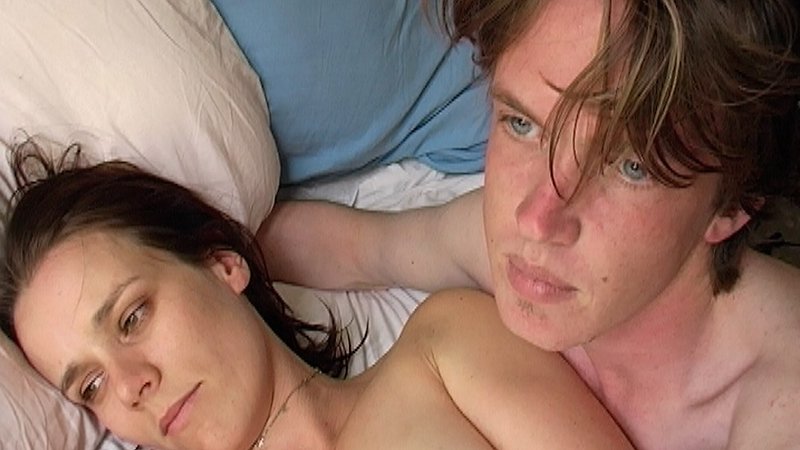Intimate, acutely observant filmmaking with true emotional power, Campbell Walker’s superbly acted digital feature concerns a young couple’s struggle to survive one partner’s crushing bouts of depression.

Screened as part of NZIFF 2005
Little Bits of Light 2005
Intimate, acutely observant filmmaking with real emotional power, Campbell Walker’s digital feature bears witness to a young couple’s struggle to survive one partner’s crushing bouts of depression. Alex and Helen are taking a winter break in a rambling old house in the Taranaki countryside. The day may hold distinct and pleasurable ‘little bits of light’, but the nights are hellish and long. Alex’s hyper-alert concern is no palliative to Helen’s illness. Walker (Uncomfortable Comfortable), who evolves his films in collaboration with his actors, is also working here with his partner, Grace Russell, drawing on their own relationship. Nia Robyn elucidates Helen’s anguish and her arresting off-kilter liveliness with unstinting clarity. Happiness is as sharply evoked in the film as its opposite and Alex and Helen charm each other – and us – with some of the knowing playfulness of a French new wave couple. In this, as in her distress, Robyn has her match in Rob Jerram, who plays Alex without a hint of self-serving nobility. Screen acting of such a high order might almost be considered the purpose of Walker’s filmmaking. It’s as if we are watching the private struggle of two real people, played out in real time, but sharpened into dramatic focus and suffused with the filmmaker’s love, wonder and dismay. — Bill Gosden
I like films that are as intimate as possible. I hate making films with lots of characters and lots of scenes. I like to see two people spending long periods of time together, and I like to concentrate on their interactions, rather than giving them opportunities to convey their emotions to third parties. I’m much more interested in watching what they do on their own!
I’m fascinated by notions of love and dependency and by how people want to be close to each other, but are often unable to sustain or control such intimacy. In this film I wanted to try and show a ‘good’ relationship, two people who were capable of being happy with each other, but are less good at dealing with an external problem.
This shouldn’t be a fairy tale though! Even the happiest and most relaxed relationship is too complex to be accurately and completely described in a couple of hours, let alone the five or ten minutes most films spend on them. The divisions and unities between people are complex, and stressful situations lead to complicated responses.
I like to work with the actors in creating characters – I never want to dictate whom they’re playing, but to place them in situations where they have room to respond in the ways that are the most interesting and unpredictable to them and to me. For this film, Grace and I wrote a set of scenes, in particular the start and finish, and then workshopped them heavily with the actors, then developed new scenes, some of which we wrote in detail, some of which were only vaguely fleshed out.
For this film we had a modest production budget, enough to go on location in Taranaki for a month with a very small crew. Scenes that were written fully were shot next to others that we came up with on the spot, and it was unpredictable how each would happen. We shot a lot of scenes – everybody involved has a favourite scene that has now gone into the deleted bin.
The process of going on location was a new, sometimes exciting, sometimes difficult experience for me, after working for smaller periods of time in cities I knew, in flats belonging to me and my friends. The notion of being in the country was integral to the story we were telling, but also important was the interaction with the landscape of the inland Taranaki.
As we shot the film, we found that the land exerted a strong and unavoidable influence upon us. I found myself thinking a lot about how New Zealand films are usually heavily tied up with the rural landscape and how we’re directed to feel a certain way about landscape because we’re New Zealanders.
But we were making a film about something we felt was a significant but much less acknowledged piece of our ‘national identity’, depression. In the film it would be ridiculous to try and dictate what a definitive reaction should be to either of these elements. An individual experience of depression is complex and subtle and ultimately completely mysterious. In the same way, a person’s relationship and reaction to the shape and presence of the land is equally complex and subtle. This is especially visible in the New Zealand countryside, where the shape of the land is foregrounded, especially for those of us who spend most of our lives in the city.
The internal distress of our characters is in some ways absorbed by the landscape and one of the characters reacts verbally to this but the location is never the explicit menace. We’ve tried to allow the non-determined openness the characters enjoy to be extended to the world around as well. Instead of forcing the land into the position of being simply beautiful or simply oppressive, we’ve endeavoured to allow it more room to be as many of the things it is. — Campbell Walker